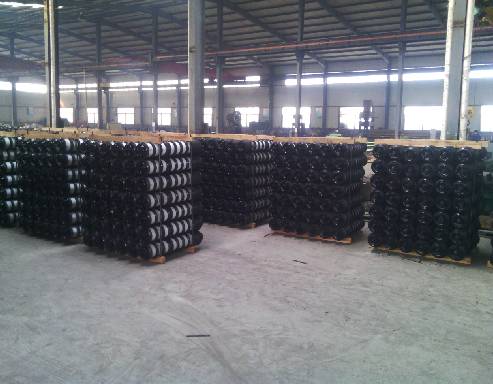 Afrikaans
Afrikaans  Albanian
Albanian  Amharic
Amharic  Arabic
Arabic  Armenian
Armenian  Azerbaijani
Azerbaijani  Basque
Basque  Belarusian
Belarusian  Bengali
Bengali  Bosnian
Bosnian  Bulgarian
Bulgarian  Catalan
Catalan  Cebuano
Cebuano  Corsican
Corsican  Croatian
Croatian  Czech
Czech  Danish
Danish  Dutch
Dutch  English
English  Esperanto
Esperanto  Estonian
Estonian  Finnish
Finnish  French
French  Frisian
Frisian  Galician
Galician  Georgian
Georgian  German
German  Greek
Greek  Gujarati
Gujarati  Haitian Creole
Haitian Creole  hausa
hausa  hawaiian
hawaiian  Hebrew
Hebrew  Hindi
Hindi  Miao
Miao  Hungarian
Hungarian  Icelandic
Icelandic  igbo
igbo  Indonesian
Indonesian  irish
irish  Italian
Italian  Japanese
Japanese  Javanese
Javanese  Kannada
Kannada  kazakh
kazakh  Khmer
Khmer  Rwandese
Rwandese  Korean
Korean  Kurdish
Kurdish  Kyrgyz
Kyrgyz  Lao
Lao  Latin
Latin  Latvian
Latvian  Lithuanian
Lithuanian  Luxembourgish
Luxembourgish  Macedonian
Macedonian  Malgashi
Malgashi  Malay
Malay  Malayalam
Malayalam  Maltese
Maltese  Maori
Maori  Marathi
Marathi  Mongolian
Mongolian  Myanmar
Myanmar  Nepali
Nepali  Norwegian
Norwegian  Norwegian
Norwegian  Occitan
Occitan  Pashto
Pashto  Persian
Persian  Polish
Polish  Portuguese
Portuguese  Punjabi
Punjabi  Romanian
Romanian  Russian
Russian  Samoan
Samoan  Scottish Gaelic
Scottish Gaelic  Serbian
Serbian  Sesotho
Sesotho  Shona
Shona  Sindhi
Sindhi  Sinhala
Sinhala  Slovak
Slovak  Slovenian
Slovenian  Somali
Somali  Spanish
Spanish  Sundanese
Sundanese  Swahili
Swahili  Swedish
Swedish  Tagalog
Tagalog  Tajik
Tajik  Tamil
Tamil  Tatar
Tatar  Telugu
Telugu  Thai
Thai  Turkish
Turkish  Turkmen
Turkmen  Ukrainian
Ukrainian  Urdu
Urdu  Uighur
Uighur  Uzbek
Uzbek  Vietnamese
Vietnamese  Welsh
Welsh  Bantu
Bantu  Yiddish
Yiddish  Yoruba
Yoruba  Zulu
Zulu conveyor take up pulley
The Importance of Conveyor Take-Up Pulleys in Material Handling Systems
Conveyor systems have become an integral part of modern material handling processes across various industries, including mining, manufacturing, and logistics. Among the numerous components that contribute to the efficiency of these systems, the conveyor take-up pulley plays a vital role in ensuring smooth operation and optimal performance. This article delves into the significance of conveyor take-up pulleys, their functionality, and best practices for maintenance.
Functionality of the Take-Up Pulley
The primary function of a conveyor take-up pulley is to manage the tension in the conveyor belt. By maintaining the proper tension, the take-up pulley helps ensure that the belt moves smoothly and efficiently. This is crucial because insufficient tension can lead to slippage, while excessive tension can cause undue stress on the belt, resulting in premature wear or even failure.
Take-up pulleys can be found in two main configurations vertical and horizontal. Vertical take-up systems are typically used in applications where space is limited or where it is necessary to minimize the system's height. Conversely, horizontal take-up systems provide greater ease of maintenance and adjustment, making them suitable for larger conveyors.
Types of Take-Up Mechanisms
There are several types of take-up mechanisms that can be employed with conveyor pulleys, each offering distinct advantages
1. Gravity Take-Up This mechanism utilizes weights to apply tension to the conveyor belt. It is a simple and reliable method but may require more space for the weight system.
2. Hydraulic Take-Up Hydraulic systems use hydraulic cylinders to apply tension, allowing for precise adjustments and the ability to accommodate varying loads. This system is highly effective but can be more complex and expensive.
conveyor take up pulley

3. Screw Take-Up In this mechanism, a screw adjusts the position of the take-up pulley, either tightening or loosening the belt. This system is straightforward but may require manual operation and regular monitoring.
Maintenance and Best Practices
To ensure the longevity and efficiency of conveyor take-up pulleys, regular maintenance is essential. Key maintenance practices include
- Regular Cleaning Dust and debris can accumulate on the pulley, leading to increased friction and potential wear. Keeping the pulley clean helps maintain optimal performance.
- Inspection for Wear Regularly inspect the pulley for signs of wear or damage. Look for cracks, misalignment, or any unexpected movement that could indicate a problem.
- Adjusting Tension Keep an eye on the tension of the conveyor belt. If the belt appears loose or excessively tight, adjust the take-up mechanism accordingly. Proper tension will enhance belt life and improve operational efficiency.
- Lubrication Ensure that all moving parts of the take-up system are well-lubricated to reduce friction and wear.
Conclusion
The conveyor take-up pulley is more than just a supporting component; it is crucial for maintaining the integrity and functionality of conveyor systems. By understanding its role and properly maintaining this component, businesses can enhance the efficiency, safety, and longevity of their material handling systems. Investing in quality take-up pulleys and effective maintenance practices will ultimately lead to improved productivity and reduced operational costs. As industries continue to evolve, the importance of reliable conveyor systems remains paramount, making the role of the take-up pulley ever more significant.
-
Revolutionizing Conveyor Reliability with Advanced Rubber Lagging PulleysNewsJul.22,2025
-
Powering Precision and Durability with Expert Manufacturers of Conveyor ComponentsNewsJul.22,2025
-
Optimizing Conveyor Systems with Advanced Conveyor AccessoriesNewsJul.22,2025
-
Maximize Conveyor Efficiency with Quality Conveyor Idler PulleysNewsJul.22,2025
-
Future-Proof Your Conveyor System with High-Performance Polyurethane RollerNewsJul.22,2025
-
Driving Efficiency Forward with Quality Idlers and RollersNewsJul.22,2025





























